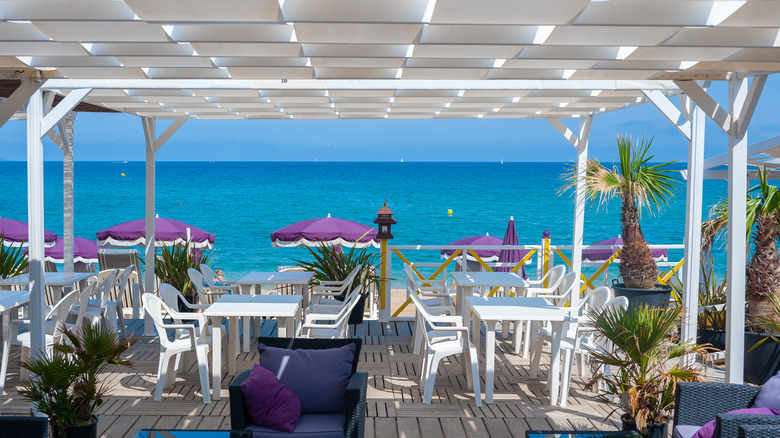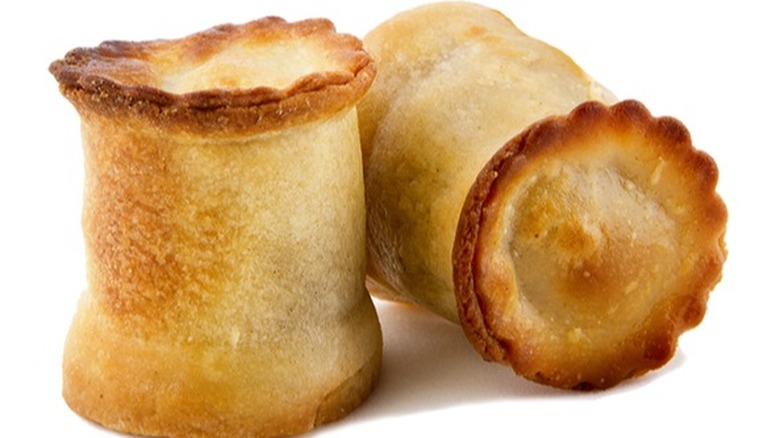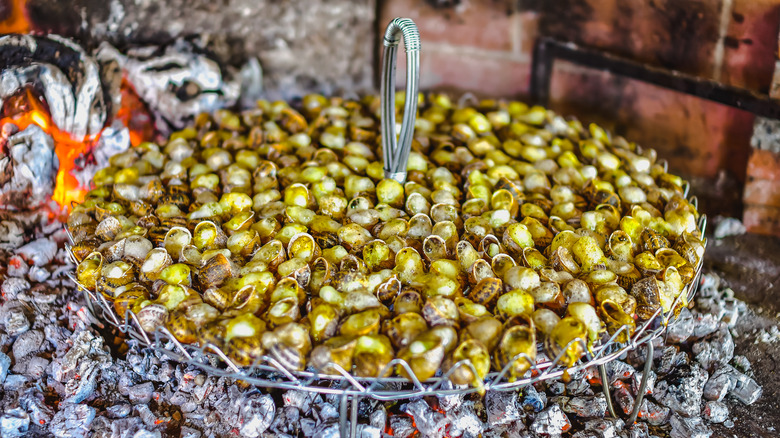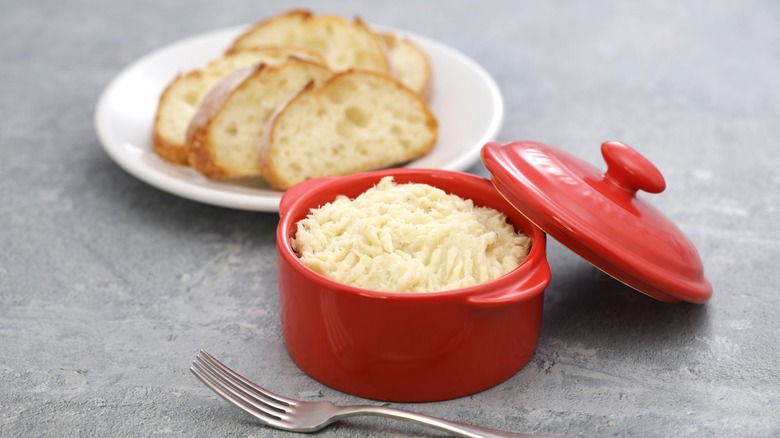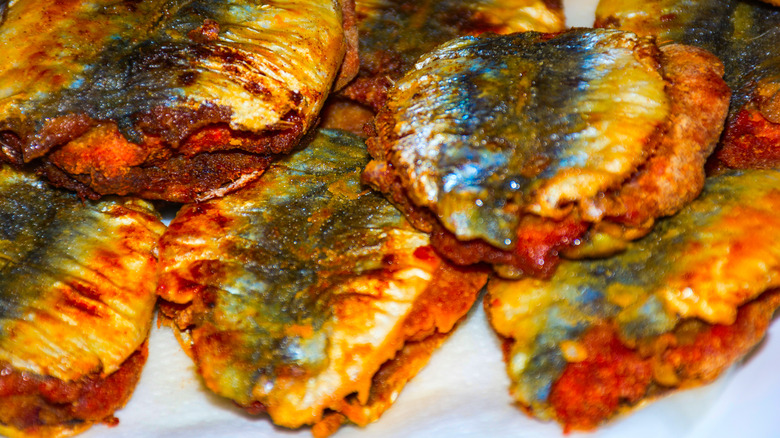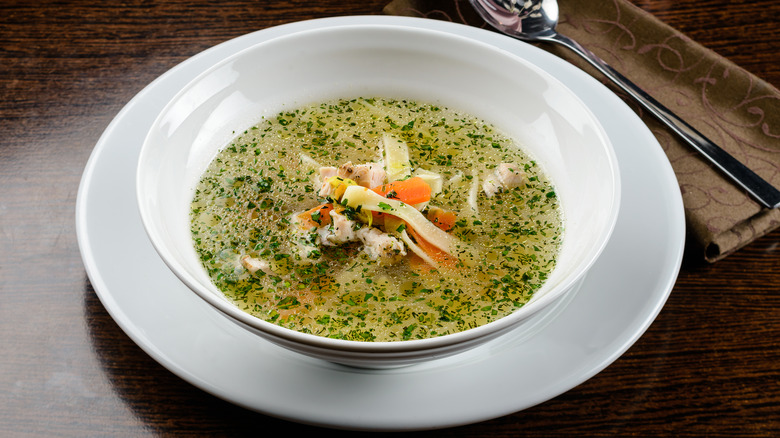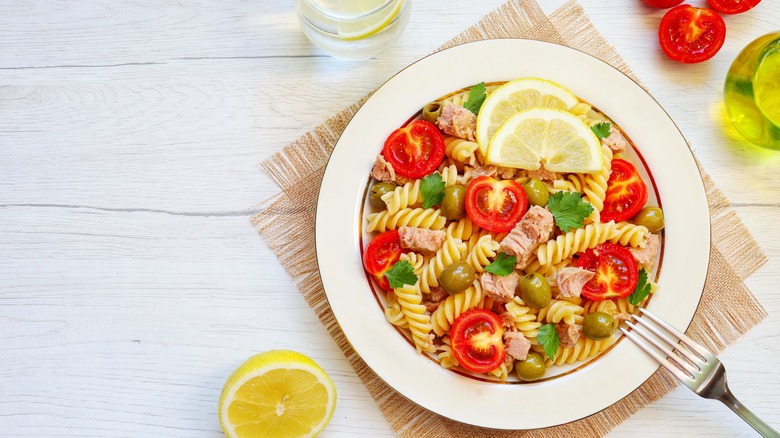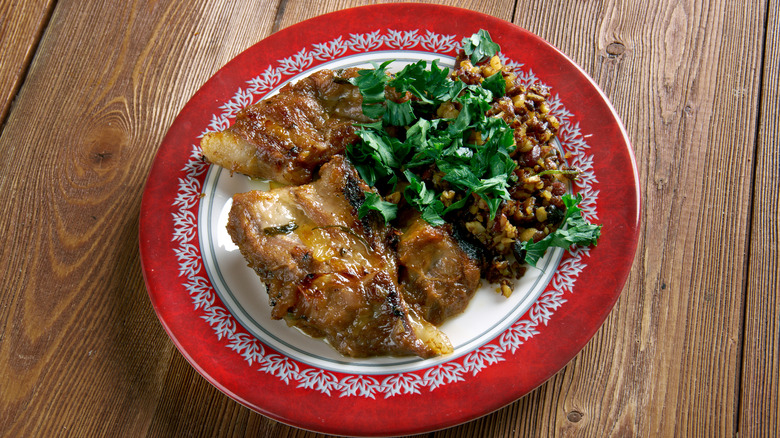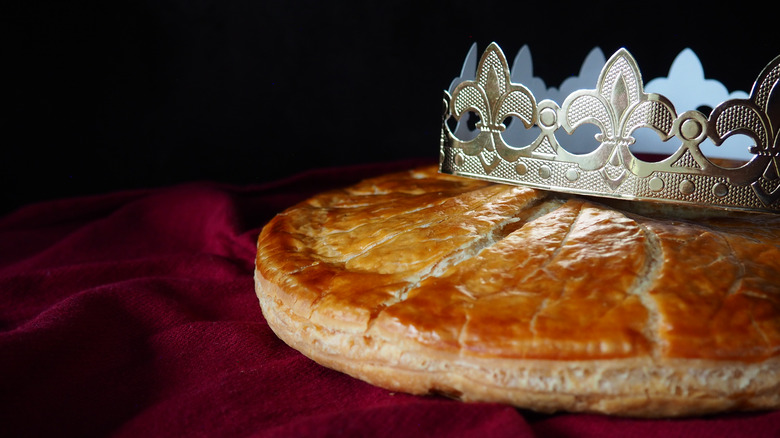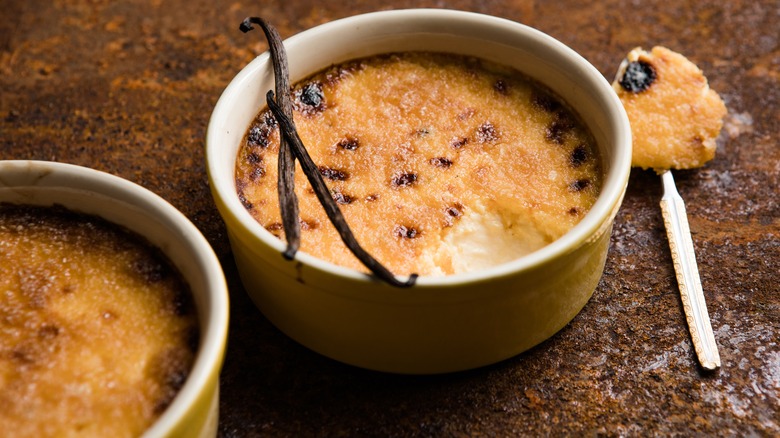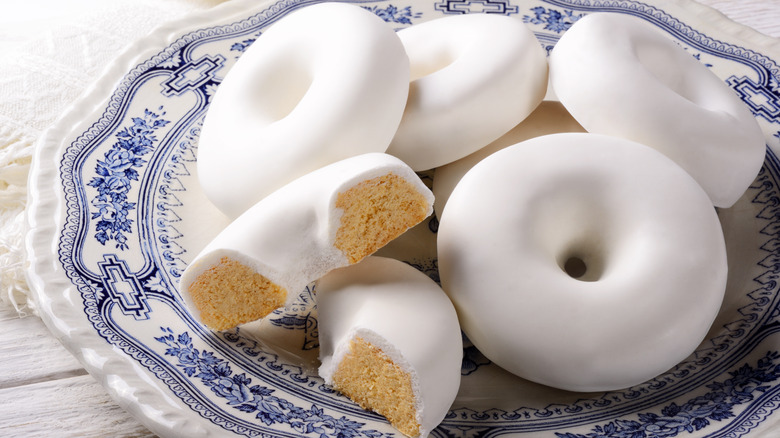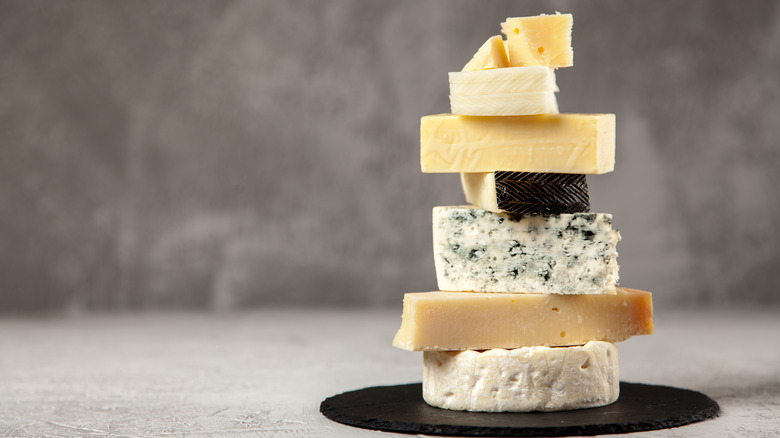13 Absolute Best Dishes From Languedoc And Roussillon, France
We may receive a commission on purchases made from links.
The Languedoc and Roussillon regions in southwest France should be on everybody's radar. They're a popular seaside destination for locals and savvy travelers but still under the radar as far as making hot travel lists. These gorgeous regions run along the Mediterranean Sea with the Pyrenees imposingly bordering the South, where it connects with Spain. Explore France tells us they are one of the world's largest and oldest wine regions. Well, how perfect are these regions? They are known as a culinary treasure. The regional cuisine and wines match symbiotically, almost like they were made for each other. The gastronomy is mainly Mediterranean, featuring lots of fresh seafood, olive oil, veggies, and local herbs. In addition, the mountainous regions produce world-class cheeses, rich meat dishes, and cured meats.
The Languedoc and Rousillon areas are a culinary playground because many microclimates allow various types of produce to be grown. In addition to juicy peaches, cherries, asparagus, apricots, and other geographical bounties, wild mushrooms and chestnuts are essential aspects of the food scene. Famous chefs such as the Pourcel Brothers showed the world the regions beauty by showcasing local goods at their 3-Michelin starred spot, Le Jardins des Sens in Montpellier. Even though it sadly shut its doors in 2016, the buzz is alive and well, and more folks are taking notice of the impressive gourmet locale. We put together some of the most important dishes that all gourmands must try.
1. Les Petits Pâtés de Pézenas
The proximity to Spain has influenced the cuisine in these regions in many ways — one of which is the popularity of small plates, like tapas. Small pâtés, like Les Petits pâtés de Pézenas, are considered starter plates. Pézenas is a historic town in Hérault where they have originated and mastered these sweet and savory appetizers. According to Bloc-Notes Culinaire, these are special charcuterie preparation from 18th-century Indian cooks passing through the area. It is a baked pie filled with sweet and savory minced mutton filling.
This starter plate is usually eaten warm at the start of a meal along with regional rosé wine or a Frontignan muscat. Wine-Searcher explains that Frontignan muscat is a sweet or semi-sweet, highly aromatic, and floral wine made in the Frontignan town. It suits the Petits pâtés de Pézenas because it elevates the sweeter flavors of the pâté while balancing the savory bits. Another way to go is to enjoy them with a local syrah or red blend to compliment the delicious savory, meaty flavors of these lamb meat pies. Pro tip: Raw Pézenas pâtés freeze very well, so don't feel inhibited when making your batches or buying this delicacy.
2. Cargolade
A traditional Catalan dish, the name cargolade is derived from "cargols," which is Catalan for snails, and "ade," meaning it is a dish based on a single ingredient, notes Taste Atlas. As you may have surmised, we are talking about escargot. But in this case, it is made with a Catalan influence. Grand Sud Insolite explains that cargolade is a recipe in which snails are grilled in their shells over a fire of vine wood. They are prepped with salt, pepper, lard, and herbs and sometimes filled with melted bacon fat. Some iterations are made with local sausage either alongside or stuffed into the snails. They are then topped with minced garlic. You will know they are done when they start to whistle — like an escargot kettle. Finally, they are served with aioli (as if they weren't rich enough).
As this is another example of a tapas-like dish (called apéro in France), they are usually eaten while standing and socializing with a glass of wine or local beer in the other hand. This specialty is famous in Collioure, and a lovely pairing is a red blend from the region, which usually includes syrah, grenache, and cinsault.
3. Codfish Brandade
Think of creamy mashed potatoes with the added brine and salt of cod. Cod brandade, which, according to Leite's Culinaria, originated in the town of Nîmes, is served with garlic toasts, stuffed into a tomato, or over a green salad. It is made by whipping salt cod, potatoes, cream, garlic, and herbs (sometimes anchovies are added for umami). The mashed potato serves as a filler and enhances the deep sea salt taste of the cod. It is typically done as an hors d'oeuvre or small plate but can quickly become a dinner staple by adding a poached egg.
It is a popular dish all along the Mediterranean, called "baccalà mantecato" in Italy, says Great Italian Chefs. There are many fantastic wine pairing options from any of these coastal areas, but the crisp and vibrant feel of a picpoul de pinet meshes with this dish perfectly. Matching Food and Wine suggests that salty foods can make a wine taste sweeter than it is, so drier wines with high acidity are the way to go.
4. Anchovies Gratinés with herbs
A simple dish that takes very little time to prepare is anchovies gratinés with herbs. Passion and Cooking explain the easy recipe: Lay the anchovies down in a baking dish (cut in half lengthwise) and then cover with a mixture of bread crumbs, lemon, salt, pepper, parsley, garlic, and olive oil, and then bake. This dish is sometimes served alongside a mixed salad in a lemon and olive oil dressing.
The outcome is a rich and creamy dish that is crispy on top. It has a zing from the lemon and tons of umami from the anchovies. Anchovies are one of the best foods for cardiovascular health because they are high in omega-3 fatty acids and vitamin B12, notes Passion and Cooking. They are also rich in vitamin D, which is crucial for bone strength. They are high in protein, so they will leave you feeling energized.
5. Bourride
Bourride is to New England clam chowder as bouillabaisse is to Manhattan clam chowder, in that bourride is the creamy cousin to bouillabaisse. The difference is the addition of aioli. A traditional bouillabaisse is a stew of white fish such as mullet, mackerel, or sea bass, but, most authentically, monkfish. Modern takes might include scallops, mussels, or clams. The stew's base is a stock with simmered leeks, fennel, onions, celery, carrots, and a spritz of lemon. Bouillabaisse originated in the city of Marseilles, but the regions of Languedoc and Roussillon took it up a notch with the creamy texture and vibrant flavors of aioli (made up of garlic, lemon, Dijon mustard, olive oil, and egg yolks), per The Modern Proper.
In between sips and dips of crusty bread into your bourride, enjoy the gorgeous fizz from Limoux. Limoux is actually where the first sparkling wine was ever made. Reuters explains that these sparklers are vibrant and complex. Of course, there are differences between crémant de Limoux and blanquette de Limoux, but either one will give you the fresh lemon and biscuit notes that will meld with the dish as if they were made to be enjoyed together.
6. Tuna à la Catalane
More of a lunch dish, this light, fresh meal is a medley of pasta, tuna filet, tomatoes, peppers, and olives seasoned with a sherry vinegar sauce, according to My French Grocery. It's easy to find it pre-made at supermarkets in France (a popular brand is Petit Navire), but also very simple to recreate. This refreshing nosh craves to be eaten with a glass of rosé overlooking a pastel pink sky along the seaside. Gérard Bertrand is a wine producer that is very important in the Languedoc and Roussillon regions. As a significant producer, Gérard Bertrand has worked to put the area on the map with its incredible range of local wines.
It makes several different rosés, but for this occasion, the Cote des Rose perfectly matches your tuna à la catalane. Light and bright with summery notes of cassis, lavender, strawberries, and peaches, this wine will bring out the crispness of the dish while giving an acidic backbone and soft fruity notes that will drive the beachy vibe home.
7. Clapassade
A sweet and savory dish, clapassade is a traditional stew hailing from Montpellier made with slowly simmered lamb, honey, olives, and star anise, per Taste Atlas. A roux is made and then deglazed with local wine — as they say, "what grows together, goes together." The lamb shanks are adorably called "souris d'agneau," meaning "mouse of lamb," since the shanks are so tiny. C'est mignon! Your local butcher can cut larger shanks in half if needed. When finished, the dish is garnished with grated lime. The sanguine flavors of the lamb gain an undercurrent of licorice and sweetness. All ingredients are hyper-local to the Montpellier region, notes Taste Atlas.
A trip to the local Montpellier farmer's market (or a few clicks from a specialty shop) can check off the ingredients needed: lightly brined lucques olives, réglisse (licorice root that is usually tied in a muslin bag), small spring lamb shanks, and regional miel (honey).
Snag your favorite wine from Montpellier to go with it. A red from Pic Saint Loup echos the rich and complex flavors of the dish. Made of mostly grenache, syrah, and mourvedre, Pic Saint Loup wines are showy with flavors of garrigue and black cherries that elevate the clapassade.
8. Cassoulet
Cassoulet is synonymous with comfort. Depending on the region, a different kind of meat is slowly braised for hours in a glazed terracotta casserole pot over white beans until both are soft and luscious. Three cities in southwest France are celebrated for their cassoulet offerings — Castelnaudary, Carcassone, and Toulouse, notes D'Artagnan. In Castelnaudary, white kidney beans are submerged with pork products such as smoked ham, spicy sausages, and pork shoulder. Cassoulet de Carcassone includes chunks of mutton, lamb, partridge, or quail, while cassoulet in Tolousain is all about duck or goose confit.
Although it takes all weekend to make, it's worth the effort. First, cure your meat on Friday; on Saturday, you can confit the legs, soak and cook the beans; then on Sunday, all you have to do is bake it. Then, enjoy it with friends and hearty red wine. A bottle of Corbières red is rich in texture and herbal notes that are sure to mesh with your cassoulet beautifully.
9. Limoux King Cake
Another Wine Blog explains the differences and similarities between Mardi Gras in the United States and the Limoux Carnival. While Mardi Gras is technically one day (with celebrations surrounding it), Limoux Carnival lasts from January to March. Additionally, Mardi Gras is known to be debaucherous, while Carnival is unfettered joy and celebration. Lastly, Mardi Gras is typically toasted with cocktails like the popular Hurricane, while Carnival is celebrated with the regional sparkling wine — Blanquette de Limoux. However, one thing is the same — King Cake plays a considerable role in both fêtes.
French "galette des Rois," or King Cake as we know it, is one of the oldest pastries in France. It is a round or rectangular puff pastry cake filled with frangipane, a dense almond filling. Nearly 20 million of these cakes are consumed in France each year! There are many traditions surrounding the King Cake (some less savory than others), but the most well-known is that the youngest person goes under the table and chooses which guest gets each slice (without being able to see it being cut). Whoever gets the piece that has a bean or an ornamental charm inside gets to be king for the day and has to buy next year's cake.
10. Croustade Languedocienne
Croustade languedocienne is a thinly crusted pie that is hand-formed (almost like a galette) filled with apple slices that had been swimming in Armagnac and sugar. According to Francoise's Kitchen, you can make it with a homemade puff pastry, pâte brisée, or a stretched dough akin to phyllo dough. Some iterations include orange blossom water and almonds. The apples are drained before being placed in the dough, and the juice is then brushed onto the dough halfway through cooking to give the crust a crispy caramelization.
A glass of Armagnac (brandy made in the Armagnac region) is a lovely accompaniment as its bitter notes attenuate the toothsome flavors, and the weight of the brandy is in balance with the croustade. To match its sweetness levels, a glass of regional demi-sec viognier pairs nicely; not only is it in accordance with fruitiness but the rich floral notes of the wine complement the pectin of the apple and orange blossom water.
11. Crème Catalane
If you are looking for a lighter variation of crème brûlée, look no further. Crème Catalane is very similar, but this Catalan-inspired version is made using whole milk for the custard rather than the heavy cream that is used in crème brûlée. Another difference is that it is made with lemon or orange zest and cinnamon instead of vanilla. Finally, when it comes to the cooking method, the crema Catalana is set by chilling rather than being baked in a double broiler like the crème brûlée.
The top can be caramelized similarly — using a torch to crisp up sugar crystals on top, but another way is to use a round iron device to burn the sugar, says Laylita's Recipes. No worries if you don't have either kitchen gadget — the broiler will do just fine. According to Regions of France, some chefs will serve it slightly warmed to bring out the spices and citrus.
12. Rousquilles Catalanes
What looks like a doughnut, crunches like a biscuit, and tastes like Christmas? Rousquilles Catalanes, of course! The French Pâtissier explains how to make these delicious tea-time snacks. They are round with a hole in the middle like a doughnut, but they are soft on the inside and crispy on the outside. The name means "little wheels." Some are standard doughnut-shaped, and others are large ovals.
They are dipped in a special icing that is flavored with anisette and orange blossom (although there are many variations available, including flavors of cocoa, rum, or even mint). Banyuls (a sweet red wine) or muscat (a floral white wine) are sometimes used in the icing, making either of these wines an excellent choice for pairing if you want to amp up tea time. They can be challenging to make, but they are easy to find online. We're salivating just thinking about them.
13. Local cheeses
Is there a more perfect way to wrap up a meal than a plate of local cheeses drizzled in honey? Cellar Tours walks us through the region's bounty of world-class cheeses. Pélardon is a goat cheese that is unctuous and creamy on the inside with a white, bloomy rind that gives it astringent and butty flavors as it ripens. The less ripe it is, the less pungent. Village white wines that are chardonnay or sauvignon blanc-based pair beautifully with these cheeses. If you like to get funked up, go for cathare cheese, a thin disc of goat cheese surrounded by charcoal ash and a light dusting of white mold, notes Culture Mag. The flavors are more intense because of the surface area of the bloomy rind and the make-up of the hull. Look for the imprint of the Occitane cross stamped on top. Another goat cheese to seek out is pave de chirac. According to Cooks Info, it is a creamy farmhouse cheese that boasts a light funkiness due to the speckles of mold.
Roquefort is well known worldwide and hails from the Occitanie — mainly in the Languedoc. This complex and funky bleu cheese is made exclusively with raw, whole sheep's milk from a specific breed of sheep called "lacaune." It ripens in the natural caves of the Combalou slope in the village of Roquefort-Sur-Soulzon. Very niche! If you are looking for a milder bleu cheese, look for bleu des causses.
